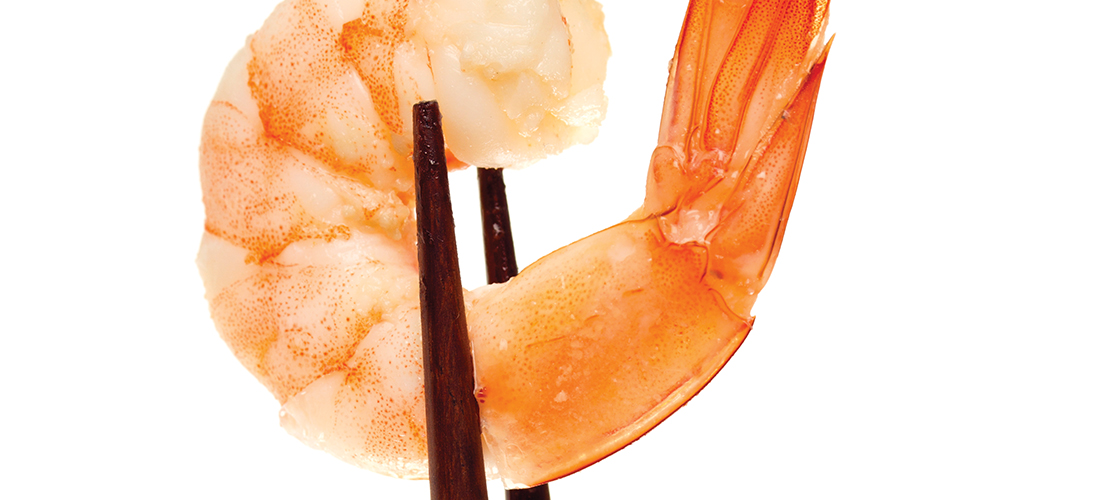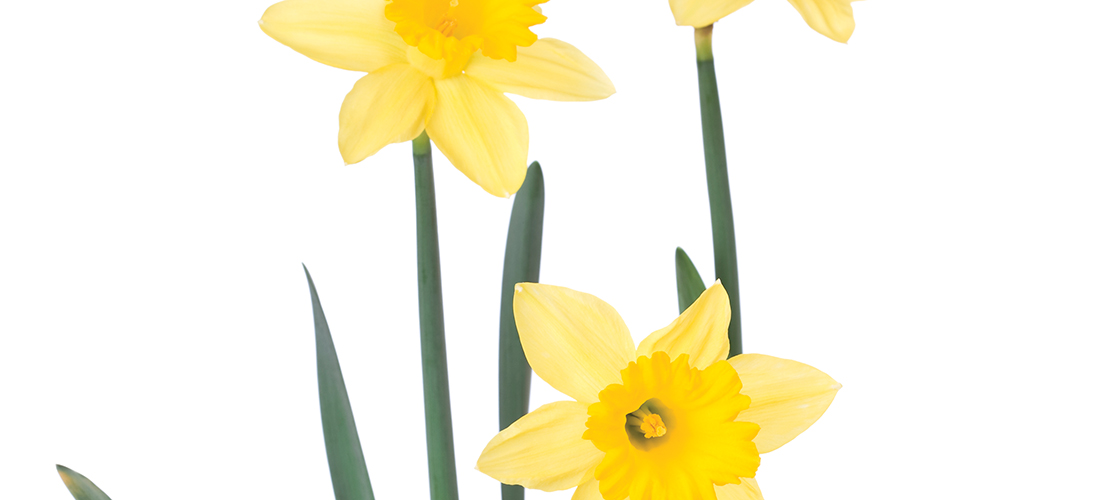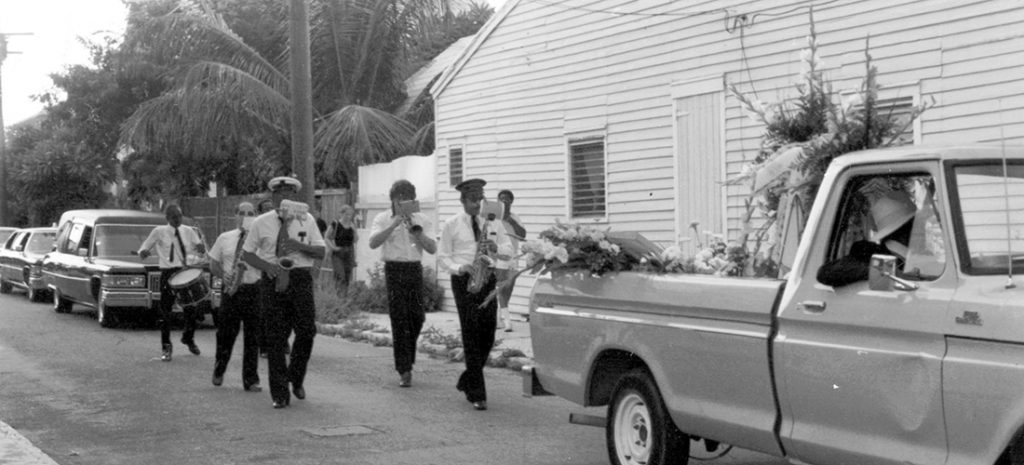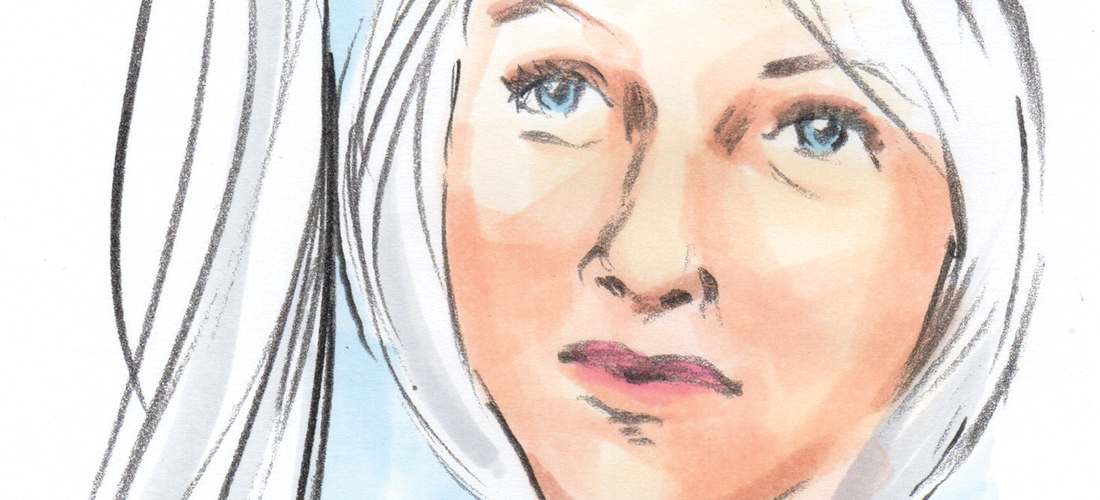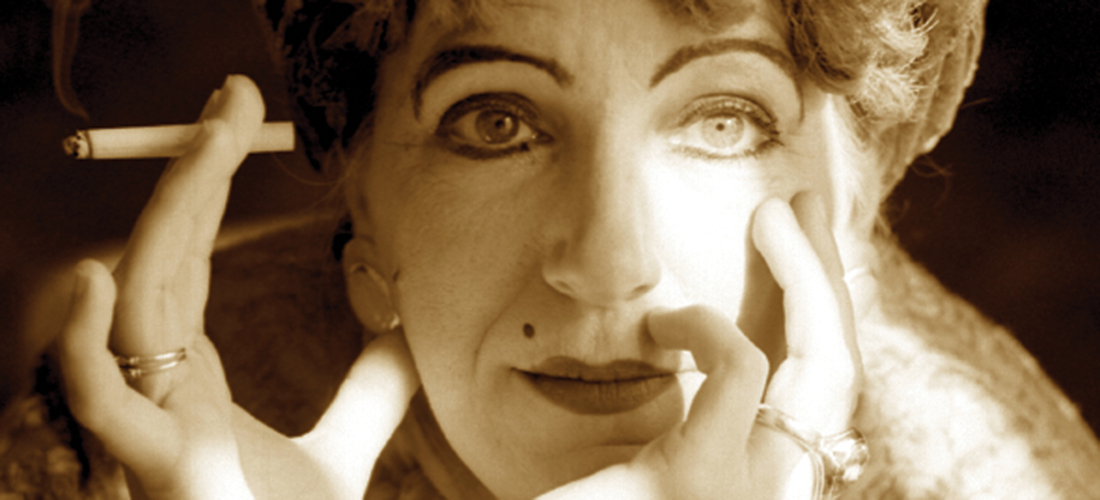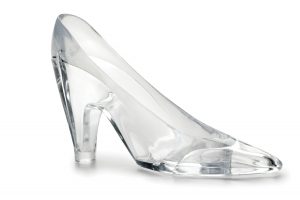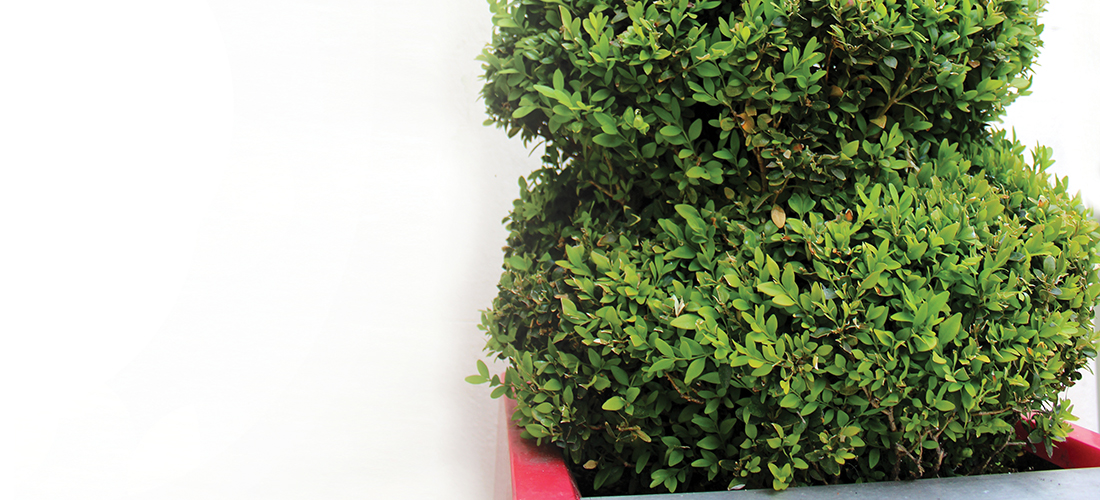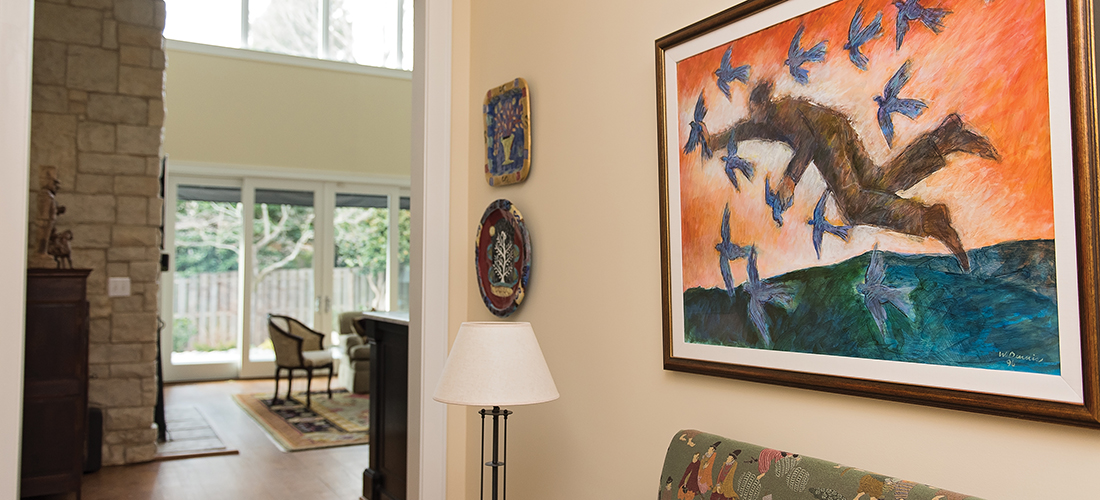Worthwhile
Artist Lauren Worth’s house of light and fantasy
By Cynthia Adams
Photographs by Amy Freeman

Lauren Worth makes her way to the back of her sunny house. Like the rest, it is uncluttered and peaceful. As she walks, she chats about how she and her husband, David, bought it after a “premature” downsizing to Ascot Point. They discovered they were too young to move into that situation, she explains, with a half-grin, half-grimace. Neither retired nor seriously contemplating doing so, they soon exited Ascot Point.
And yet, she adds, downsizing was a good exercise.
Having gotten rid of most of their furniture in that prior, premature move, the Worths found the current, larger home. It is not a McMansion but a house of wonderful scale, occupying a quiet street in Irving Park. They furnished it largely with things taken from a mountain home.
Worth laughs. “We were too practical to go buy all new furniture just because we had gotten rid of everything.” With a shake of her head she adds, “We would never do that.” The house itself is open and modern, but it is the back half of the Worth dwelling that makes the statement. So she likes that this new house (built in 2006) suggests a vacation home, in Worth’s mind at least. That has something to do with the interiors being shot-through with light, and also the nearby pool, a languid, liquid piece of art.
It is a nice counterpoint to the large cook’s kitchen that opens onto a den with a dramatic, two-story fireplace. The den, with a wall of glass, in turn, opens onto the rectangular-shaped — and dazzling — pool. It’s the sort that suggests a famous someone just left one of the lounge chairs to call her broker or agent.
The pool occupies most of the backyard. It is flanked by a fireplace and outdoor living room at one end and a bar at the other. The sum of this means easy entertaining for a crowd of a hundred or more — or even their son’s recent engagement party.

The smooth marriage of the house and pool exudes California Cool, a vibe that says, “Let me entertain you.” As the afternoon sun moves, the pool’s surface becomes a silky trampoline, playfully bouncing light back to the interior of the house.
Yet the cultivated sparseness of the architecture and interiors also makes for a perfect canvas. The neutrally decorated walls become the perfect backdrop for the art that Worth collects. Or rather, as she explains, art that she has gathered.
Pausing, Worth says she especially feels fortunate to find herself here, in such a sunny space — especially given she also works here in an upstairs studio; serendipitously, it already existed when she and David moved here two and a half years ago.
She stops to point out pieces of artwork the couple have collected, lingering to explain why she loves the particular artist. (Worth has been long involved with The Public Art Endowment through the Community Foundation, and has been a hard-working advocate for public art.) “I also buy art from artists I respect and know personally, and it gives me great joy to stroll by their work every day in my home. I buy mostly 2-D work but also ceramics and sculpture.”
Worth is a working artist herself, which is why it all becomes so personal. “I basically buy art because I like it, and I’m not consciously building a collection or buying it as an investment,” Worth told me in an email. “I guess you could say that all our artworks have become a collection of sorts because most of the works are by artists with an N.C. affiliation,” she wrote. “N.C. has a rich history is supporting artists and offering nurturing, educational and highly creative environments for artists (such as GreenHill, N.C. School of the Arts, Penland School of Crafts, The Governor’s School, Weaver Education Center).”
Worth well knows how difficult it is for artists to make a living selling their artwork. “That’s another reason I want to keep supporting other artists and add to the work we have.”
The artistic impulse must feel like a genetic imperative. Worth’s uncle, Marshall Bouldin, and his son, Jason Bouldin, are artists. “They are outstanding portrait painters, and I’ve learned a great deal from both of them over the years,” Worth explains. Personally, however, she especially likes contemporary, nonrepresentational works.
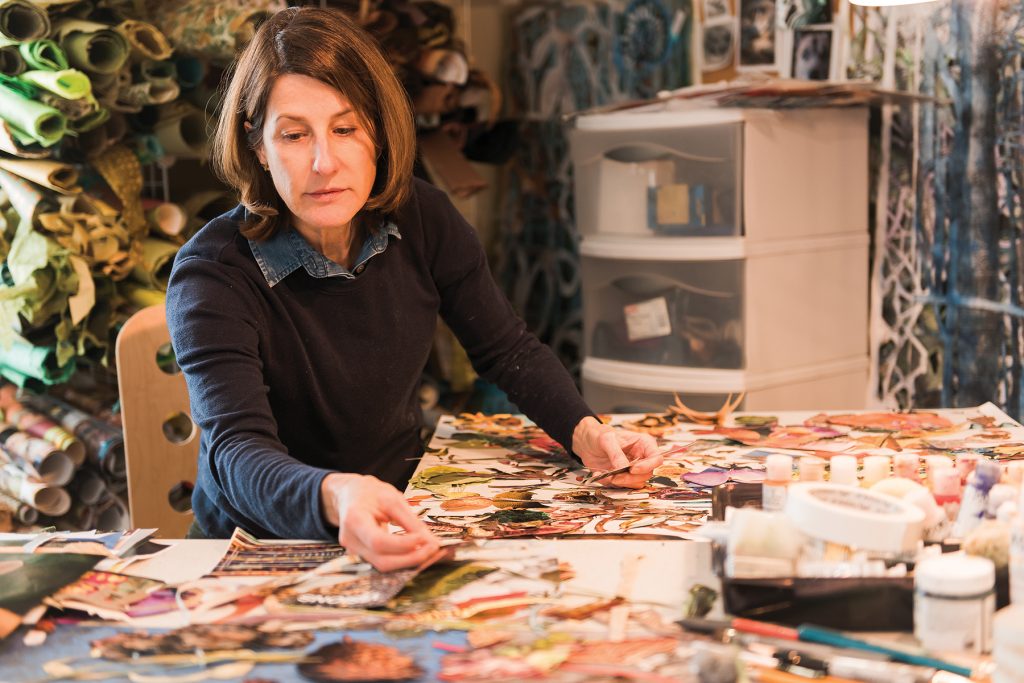
In an artist statement, Worth once wrote: “I am a gardener of strangeness in the true sense of Baudelaire. For me, art is a puzzle, each piece beautiful, strange and unique, slowly forming a larger image as we begin to understand its logic and intoxicating beauty. My engagement with the natural world has led me to believe that we can be sustained through playful care, reverence and stewardship of the world around us. It is my goal as an artist to cultivate curiosity and encourage the discovery of beauty in the strangest of places.”

Inside her studio, she says, “I live with my own art on a daily basis in the studio, which is a blessing and a curse: I love what I do, it challenges me, but I sometimes just get sick of staring at it all the time,” she admits. Worth takes the conversation upstairs, and moves about her studio describing where she buys the handmade papers she uses in her work (usually at Penland) and how she makes the oversized stencils she uses from her own enlarged photographs taken in the deep woods in order to create mixed medium collages. Using acrylic paint, acrylic gel medium, handmade paper, photographic images, magazine clippings and handmade templates, Worth builds the multi-layered collages. Austrian painter Gustav Klimt and Swiss-German surrealist Paul Klee are inspirations to her.
“There is a natural metamorphosis of the painting itself. I try to make sure that proportion, scale and composition is right,” Worth says of her artistic process.
She has shown in the last year in Aspen, Colorado, the Semans Gallery in Durham and in New York. Her work is sold in New York through the Walter Wickiser Gallery, and at the Tyler White O’Brien Gallery in Greensboro and online. She has three paintings that were chosen for GreenHill’s Collector’s Choice this winter.
While Worth inhabits an otherwise orderly life and home, she protests the studio is a mess (it isn’t) as she points to works in progress. Pausing before a 28 x 48 commission underway, she gestures to details she has created that blend paint with her own, manipulated photographic images. Her technique was developed as a result of a desire to break out of her old art forms.
“I woke up one night and thought of it, seven or eight years ago. I was trying to think of something different that would capture the feeling of a tree but give me room to manipulate it. There were a lot of branches, for example,” she says, pointing to a collage, “and texture.”
She chooses what to leave in, or out. Then, Worth says she further abstracted the branches “so there is a semblance of it . . . a combination of representational images and abstract geometric forms. I want there to be something left of mystery in a painting. I like to put fish in trees . . . although fish do move in trees in Alaska, where salmon spawn.”
For Worth, art is a portal into a fey world where each tree branch, wisp or willow is not exactly as it appears. There is a bit of mystical, magical witchery, wonder, even quantum physics in each composition. “My paintings have a mind of their own,” she says and laughs. The outcome is beautiful and fantastical: Feathers and coral grow in trees. Using magazine clippings, for example, Worth fashioned coral to portray it as a parasite on the tree.
“It is about metamorphosis. We go into the woods for the stillness we find there, but under the quiet there is all this universal flux, this constant change.
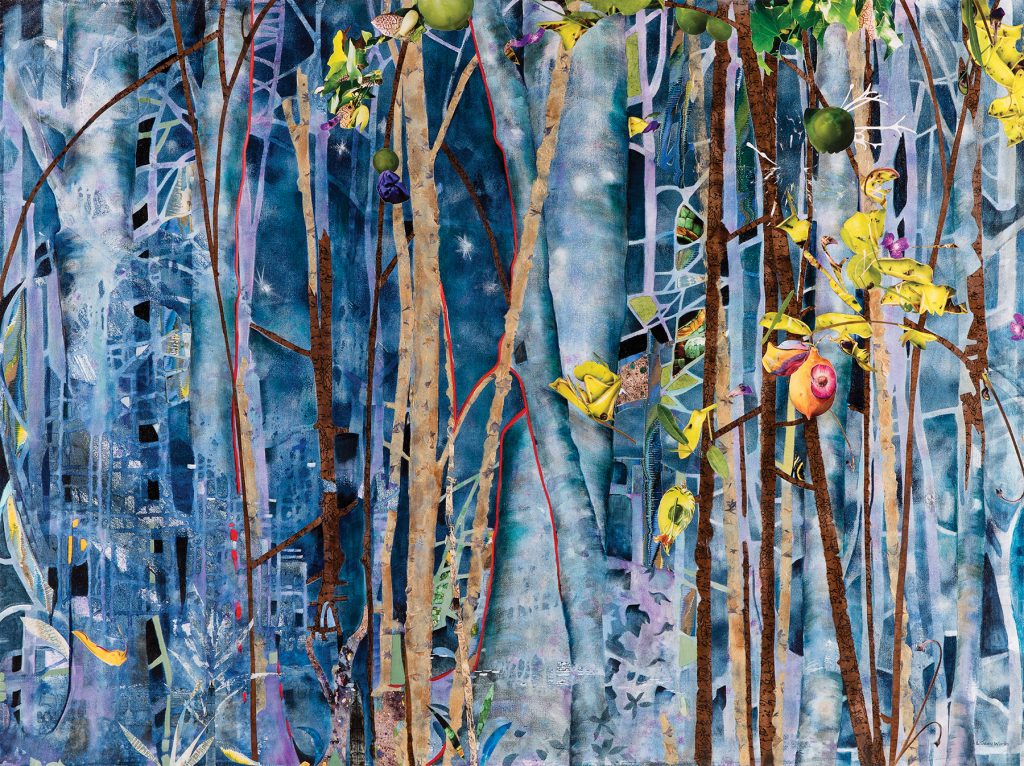
“There is a semblance of a branch,” she says, pointing to a detail, “but it is a combination of representational image and abstraction.”
She accepts commissions on occasion, saying that her collectors “know what they like — not like what they know.” When a work is done, Worth steps away.
In one titled Gossamer Delight, she painted over what was originally there because it didn’t quite please her. The ghost of the original painting bleeds through. “This is called pentimento,” she explains. “It comes from the Italian for ‘repent.’ It’s almost like we try to get rid of our sins but can never quite do it.”
Now, Worth accepts, even likes, the painting that the former one has become. “Each piece skirts the border between the real and the imagined like a memory that may have been a dream,” she once said.
Nor does it pierce her heart when someone is critical of her efforts, Worth says. At one of her shows, a man told her he did not care for her work.
“I wondered if he would have liked more space,” she muses. Not personal space — just space within the art itself. Worth absorbed the criticism, trying to find its meaning and use. She had already been trained in the art of handling criticism in her prior life as an artist working for years at Wind Rose, a long-standing Greensboro business. (The owners have since deceased.) It was there, working in an atelier, that Worth learned to take all in stride. Wind Rose artists created unique works of art from furniture and accessories, hand painting the imported European pieces — sometimes to withering criticism of designers who reviewed the pieces designated for trade only.
“It was great, really great,” Worth says of Wind Rose. It was a true artists’ studio; the years working at Wind Rose gave her confidence. There could be strangeness in beauty, she discovered. “Ned, an owner, said, keep painting balanced but asymmetrical. This gives it rhythm and tension.” It also led her to desire that things around her be beautiful, she says, and accept her own self-creation.
“I consider myself a late emerging artist.” OH
Cynthia Adams is a contributing editor to O. Henry and writes for various magazines and publications. While working in the Netherlands, she tried her best to visit all 300-plus museums there and solidified a love of art and artists.

